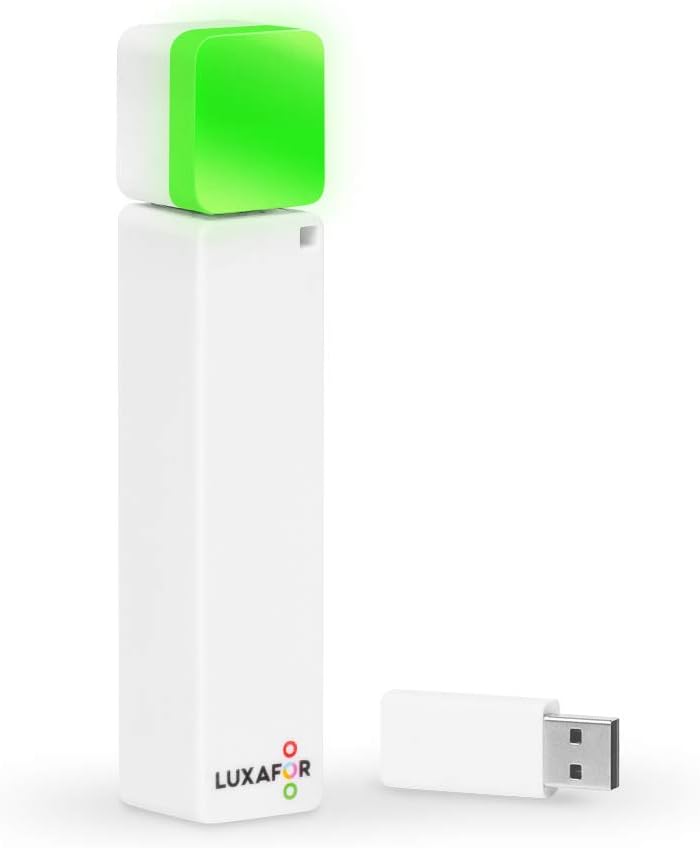How to Harness Hyperfocus Without Burning Out
Simple techniques to help you get into a deep focus zone and actually stay there. Perfect for busy days when you need to do your best work.
Last updated: May 26, 2025

TL;DR: Hyperfocus is a powerful state of deep concentration that helps you do your best work. You can reach it more often by creating the right environment, using routines, and protecting your focus with the right tools.
Ever wished you could shut out distractions and get completely absorbed in your work? That deep, flowing focus is possible, and this guide will show you how to find it more often.
We all know that magical feeling when time seems to disappear and you're fully immersed in what you're doing. That's hyperfocus, and it's becoming a rare superpower in our distraction-filled world. Most of us get interrupted every 3 minutes, and it takes about 23 minutes to fully get back on track after each interruption.
What happens when you're in the zone
When you're deeply focused, your brain creates the perfect conditions for your best work:
- Your attention zeroes in on what matters
- Distracting thoughts fade into the background
- You find creative solutions more easily
- Time seems to pass differently
It's not just in your head. Your brain actually shifts into a different gear during these periods of deep work.
Create a focus-friendly space
Your environment makes a huge difference in how easily you can concentrate:
Clear the visual clutter
- Keep only what you need for your current task on your desk
- Move your phone out of sight (seriously, even face-down is too tempting)
- Let others know you're in focus mode with a Kuando Busylight UC Alpha or Embrava Blynclight
- Position your screen so you don't see movement in your peripheral vision
Get the sound right
Not all noise is created equal. Some sounds actually help you focus:
- Music without lyrics (instrumentals, lo-fi, ambient)
- Steady background noise (rain sounds, white noise, coffee shop ambience)
- Complete silence (if you can get it)
The key is consistency. Sudden, unpredictable sounds are what break your concentration.
If you need a physical anchor, try a Handheld Roller Fidget Toy, Infinity Cube Fidget Toy, or Tangle Fidget Toy Set to help settle your mind and keep your hands busy.
Shut down digital distractions
Your devices are designed to grab your attention. Take back control by:
- Turning off all notifications during focus time
- Closing email and chat apps
- Using website blockers for your most tempting distractions
- Putting your phone in another room (or at least on Do Not Disturb)
Your focus warm-up routine
Just like athletes warm up before a game, your brain needs a consistent routine to signal "it's focus time." Here's a simple one that works:
- Know exactly what you're doing. Be specific about your goal for this session.
- Create a physical anchor. It could be a specific seat, a pair of headphones, or even a special focus object.
- Adjust your energy level. Too tired? Have a small snack or quick stretch. Too wired? Take a few deep breaths.
Many people find that having something to do with their hands, like the Handheld Roller Fidget Toy, helps their mind settle into focus mode. The gentle tactile stimulation gives the restless part of your brain just enough to do without pulling attention from your main task.
How long to stay focused
Your brain isn't designed for marathon focus sessions. Instead, work with your natural rhythms:
- Try 50 minutes of focus followed by a 15-minute break
- Or 25-minute bursts with 5-minute pauses between them
- Some people do well with 90-minute deep work blocks that match our natural energy cycles
Experiment to find what feels best for you. The right rhythm will leave you energized, not drained.
Find what works for your unique brain
We all focus differently:
If you get distracted easily:
- Try "body doubling" (working alongside someone else, even virtually)
- Use background noise or a fidget tool to keep the restless part of your brain occupied
- Take brief movement breaks every 20-30 minutes
If you're sensitive to your environment:
- Create sensory shields with noise-cancelling headphones or screen filters
- Work during your natural energy peak times
- Give yourself buffer time between activities to reset
Fuel your focus
Your brain is an energy-hungry organ. Keep it properly fueled:
- Steady energy foods: nuts, avocados, eggs, oatmeal
- Regular hydration (even mild dehydration hurts concentration)
- Small, frequent meals rather than big ones that make you sleepy
Skip the sugar bombs and excessive caffeine that leave you crashing later.
The secret ingredient: proper recovery
The most overlooked aspect of great focus is what you do between focus sessions. Your brain needs real breaks to perform at its best.
Good recovery activities:
- Brief nature exposure (even looking at photos of nature helps)
- Light physical movement
- Activities completely different from your work
- Quick, positive social interactions
What to avoid during breaks:
- Social media scrolling (it depletes rather than restores attention)
- Solving complex problems
- Anything involving lots of decisions
Quick fixes for common focus problems
Getting distracted by your phone?
Put it in another room, not just face down. Studies show having it nearby reduces cognitive capacity.
People keep interrupting?
Use visual signals like Kuando Busylight UC Alpha, Embrava Blynclight, and noise-cancelling headphones to create a "do not disturb" bubble.
Mind keeps wandering?
Keep a small notepad nearby to jot down distracting thoughts so you can let them go and get back to work. Or try a Tangle Fidget Toy Set or Silicone Sensory Worry Stone Set for subtle, calming fidgeting.
Energy crashing mid-task?
Match challenging tasks to your natural energy peaks, and use quick movement to boost alertness when needed.
These simple but powerful techniques can help you find that elusive flow state more reliably. With practice, you'll be able to drop into deep focus when you need it most, getting your best work done without burning out.
Looking for tools to create your perfect focus environment? Check out our collection of focus-friendly products, Fidget Tools, and Busy Lights designed to help you find and maintain your concentration.
Find Tools That Make Focus Easy
Discover handpicked products designed to help you get in the zone and make the most of your day.



